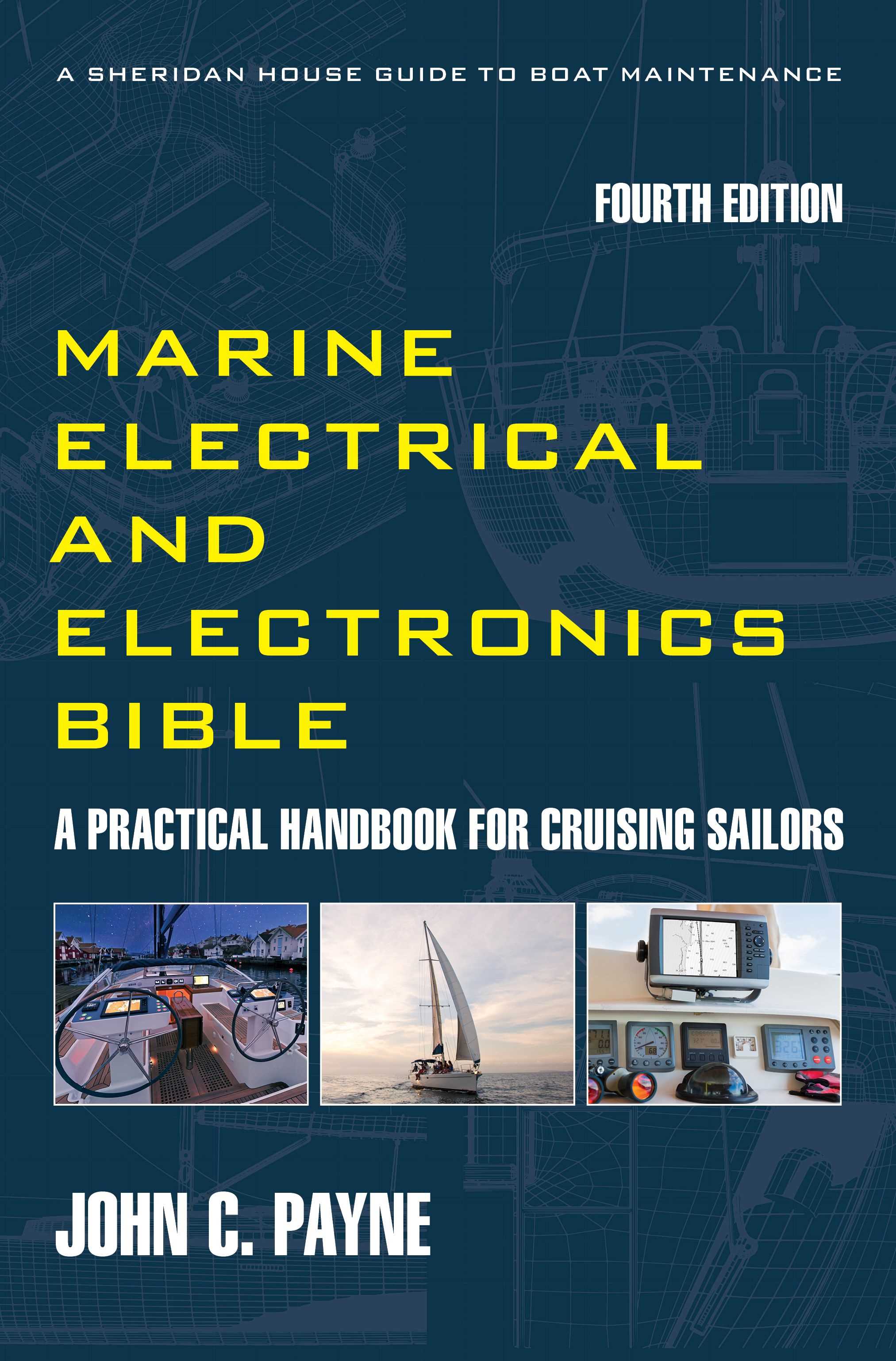Boat Anchor Windlass Selection
If you are replacing a well worn boat anchor windlass, or upgrading from a manual anchor winch to an electric anchor winch there are many points that must be considered. I am upgrading my recently purchased boat manual windlass, and happy to see the end of the back breaking activity. It is a good time to review your whole ground tackle anchor arrangement, and your boat anchoring techniques. Most boat anchor windlass manufacturers offer a range of useful tools and guides to help you make the right choices for your particular boat and circumstances. Get online and use these helpful charts and guides. Most make operation and installation manuals online so download and get familiar with your chosen windlass.
The Marine Electrical Electronics Bible is now out, buy and save money, make your boat more reliable and be self sufficient.Boat Anchor Windlass Selection
The first boat anchor winch criteria is all about your sailboat. That means boat length and displacement. Then we look at the anchor type being proposed, so many to choose from. Which anchor type? There is the Claw, Bruce, Kobra II, Wing, Lewmar Delta and Epsilon (a Delta replacement), Plow, Viper Pro Plow, CQR, Fortress, Ultra, Spade, Bügel, Danforth, Fluke, Grapnel, Lewmar LFX, Kedge, Rocna and Rocnar Vulcan, Mantus, Manson Ray, Britany, Sarca Excel and several others including the original fisherman’s anchor. Sit ten boaters together and like economists you get ten differing opinions.
Then we come to the anchor rode. This can be all rope, or a combination of rope and chain, or an all chain rode. Then we have to factor in the total length and weight of the chosen anchor rode. Then we need to consider the actual anchor weight.
Finally all these factors including anchor and rode choices have to calculate for your specific boat size and the displacement. The minimum boat anchor windlass capacity is derived from the following formula after working out the chain weight or chain/rope weight from the table for your vessel size.
The x3 factor covers windage, tidal current and a safety margin.
Anchor Windlass Capacity = (Anchor Weight + Chain Weight) x 3
Most anchor windlass manufacturers have useful charts to assist in selecting the right unit, and many prudently add in a safety margin of 15- 25%. Always over engineer anything with regards to anchors and anchor handling in your decision making.
Another important point to think about is how deep will you end up anchoring, many factor maximum expected water depth along with a safety margin. Many boats do not have enough ride to anchor in anything but relatively shallow water.
Boat Anchor Windlass Selection
Having calculated the anchor windlass capacity for your particular boat then comes the choice of either a horizontal or vertical anchor windlass. This is directly related to the available space for installation and the boat anchor chain fall. Vertical electrical boat anchor windlasses have the motor located below the deck, and horizontal ones everything is above deck. Vertical units take up less space on deck, although they can impinge on below decks space. What is the fall you might ask? The fall is where the chain “falls” directly below the anchor windlass as it falls in, directly into the chain locker. This fall is entirely gravity based. Considerations are that there is enough space for all the chain to cleanly fall and pile up. If it piles up too quickly or unevenly there is no tension on the chain as it falls down as you haul in and you get a jammed windlass. I know this all too well on one boat, absolute pain. Ensuring that an anchor rode comes in off the bow fairlead at the right angle is important to avoid fouling and jamming. This is critical in horizontal windlasses and also very important on vertical windlasses as well. So make sure you calculate chain lead in angles properly before you bolt the new anchor windlass down. Even replacements have different footprints and geometry.
About Boat Anchor Windlass Loads
Important fact to consider. A boat anchor windlass is not designed to take the entire load applied through the anchor rode when riding to anchor. This is especially important in large swells or heavy conditions. You can easily damage the anchor windlass gearbox with heavy shock loads that get applied.
As a safety precaution always transfer the load to a bollard or load bearing point using a snubber or use the chain stopper. Also it is worth checking how solid a base the anchor windlass is mounted on. I was horrified to see how much stressing the foredeck suffered on one of my boats and ended up heavily reinforcing the foredeck area under the anchor windlass.
Also use a good swivel between the anchor and chain, so that the anchor rolls and comes neatly into the stem-head fitting. One thing I look at with every boat is signs of stressing on the deck area under the anchor windlass. If it's stressed or fatigued the chances are the anchor windlass has sustained some hard stress too, so regularly inspect every part of the anchor windlass system. More about the boat anchor windlass to come and also lots to learn about anchor handling.
